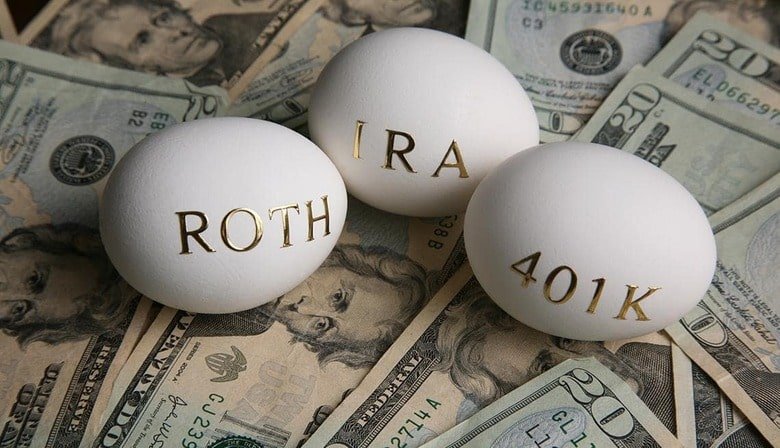IRA Account – The Benefits and How to Open One

What is IRA? How can it help me? Is it a good idea to open one ASAP? These are just some of the questions that many people ask themselves when they start to think more seriously about their futures and we don’t blame them one bit!
If you’re curious to know more about what it means to have an IRA and the benefits associated with it, you’ve come to the right place folks, because we’ll make everything crystal clear! So, let’s get started shall we?
An individual retirement account, sometimes known as an IRA, is a type of account that allows a person to save money for their future.
Many people in the United States, however, do not have a comprehensive understanding of the specific advantages that come with investing in an IRA and that’s OK.
More specifically, they may not know what distinguishes an IRA from a traditional savings account or brokerage account. You have enough time in the world to learn about what you want to know anyway. Take a peek at this link https://www.investorscircle.net/ira-financial-group-review/ if you’re curious to know more!
Keeping this in mind, the following are the five most persuasive arguments we can make in favor of starting an individual retirement account, and why you should do so as soon as you possibly can. But, no pressure!
Awesome Tax Benefits
Ugh, taxes, right? Somehow everyone dreads the moment when they have to do their taxes.
But, the awesome thing to know is that the opportunity to reduce your taxable income is the primary allure of individual retirement accounts. Yay! If you decide to make contributions to a traditional IRA, you might be eligible to claim a tax deduction for the total amount of those contributions, up to the yearly maximum allowed by the IRS.
If, on the other hand, you decide to establish a Roth IRA and satisfy the requirements to do so, any eligible withdrawals from the account will be exempt from taxation, regardless of how much the value of your investments may have increased.
It’s also worth noting that you don’t have to make your donations before the end of the year if you don’t want to. Contributions and benefits must be claimed at the end of the tax year.
But, wait there’s more! Your IRA investments can grow and compound tax-deferred, on top of any potential tax benefits, such as a tax deduction with a regular IRA or tax-free retirement income with a Roth IRA.
This implies that you won’t have to worry about paying any capital gains taxes if you decide to sell a stock or other investment held in your IRA at a profit. If you don’t take the money out of your IRA, you also won’t have to pay taxes on dividends you receive from investments held there.
With a Roth IRA, your dividends and investment earnings are completely tax-free. In addition, with a traditional IRA, you won’t have to worry about paying taxes on your money until you withdraw it. Find out more here.
Plenty of Investment Opportunities Available
Believe it or not, one of the most common question people ask their financial advisors is “Should I put money in an IRA, or just contribute more to my 401(k) at work?”
We’re here to tell you folks, that both of these are viable choices to explore further on. You should prioritize increasing your 401(k) contributions before contributing to an IRA, especially if you aren’t making the most of your employer’s matching contributions.
However, if you open an IRA, you’ll have access to a greater variety of investment options than you would outside of the account. At most, 401(k) plans may provide access to a few dozen investment options. However, your IRA contributions are eligible for investment in a wide variety of stocks, bonds, and mutual funds.
Retirement Security
You probably want to enjoy your retirement, right? Who doesn’t? A large number of people can’t wait to retire and start exploring the world, which is awesome because they’ll finally have enough free time to do whatever you want.
So, what we’re trying to say folks is that if you want to improve your financial stability in retirement, opening an individual retirement account could be the single best thing you ever do!
There are a lot of people in the United States who aren’t aware of this, but the purpose of Social Security is actually to replace only around 40% of the typical worker’s income.
In the meantime, the majority of financial advisors believe that in order for the majority of individuals to maintain the same quality of living after retirement, they will need a retirement nest egg that generates approximately 80% of their income from before retirement.
Unless you are counting on a workplace pension, which is becoming increasingly unlikely, you will need to draw from your retirement funds to make up the gap.
So, now that we’ve covered the main benefits, let’s focus more on how to open an IRA account, shall we? This is an important step for all of you beginners and we hardly want for you to make a mistake.
Choose Where You Want to Open Your IRA
The first thing you need to do is decide what kind of financial organization you want to use to form an individual retirement account (IRA). There is a wide variety of choices available, such as banks, brokerage firms, and automated financial advisors such as robo-advisors. Wild, right?
If you prefer to have little to no involvement in managing your individual retirement account, we want you to know that a robo-advisor might be a better option for you. These often come with minimal management costs, options for investments based on risk, automatic portfolio balancing, and various other advantages. Frequently, they can be readily maintained by using a dashboard that is accessible online.
A brokerage can be a better choice for investors who prefer a more hands-on approach. Brokerages typically provide a comprehensive range of management services and can have access to a greater range of investment opportunities.
Consider looking for brokers who offer fee-free investing opportunities as well as minimal or no account maintenance costs if you are interested in the most cost-effective choice. These kinds of brokers are frequently referred to as discount brokers.
You should try to avoid basing your decision exclusively on the fees or commissions. While cost should be a consideration when making an important decision like this, there are other aspects to take into account as well. These include your level of investment expertise, your familiarity with technology, the minimum investment requirements of the financial institution, and the kind of service they are recognized for providing.
Last but not least, take into consideration the comprehensive nature of the service you will get. Robo-advisors don’t typically cost very much money, but depending on how comfortable you are with technology, it’s possible that you should consider going in a different way and speaking with your bank or financial advisor instead.
Pick an IRA Type
“Are there any types of IRAs I need to be aware of?”, “Which type should I choose?” Listen up folks, because this is important to know.
Awesomely enough, there are a variety of IRAs from which to pick. Some allow you to withdraw funds tax-free once you’ve reached retirement age, while others provide an immediate tax benefit.
Here are the most common variations of individual retirement accounts:
First we have the Traditional IRAs. With a tax-deferred account like a traditional IRA, contributions are made out of pre-tax money and withdrawals are taxed when they’re taken out. Your first withdrawal can be made as early as age 59/5 and is tax-free.
Next, we have the Roth IRAs. After paying income taxes, you can put that money into a Roth IRA. This means that there will be no taxes on withdrawals made after retirement. Because of this, they are a good choice if you anticipate being in a higher tax bracket in the future. The money you put into a Roth IRA is not tax-deductible the way it is with a traditional IRA.
And lastly we have the SEP IRAs. Simplified Employee Pension Individual Retirement Accounts are designed for business owners and freelancers. Similar to a traditional IRA, contributions are made with after-tax dollars and withdrawals in retirement are subject to taxation.
Are things clearer for you now? If so, then awesome! Let’s move on to the next point.
Open Your Account
In most cases folks, opening an account is basically a piece of cake process, whether done online or through a brokerage.
The process of opening an IRA account will vary depending on the company or advisor you choose. If you prefer a do-it-yourself method, you can probably find what you’re looking for online. Opening an account with a financial institution or advisor typically involves filling out paperwork, either digitally or in hard copy.
You should expect to be asked for certain documentation and information as well.
“Is there anything else I need to know?” We also want you to know that there will also be paperwork to fill out if you decide to transfer money from a 401(k) or another retirement account.
Some institutions will transfer the funds directly to your new IRA. If anyone else contributes to your new IRA, you’ll have to take the initiative to deposit their check. It usually takes between two and four weeks to complete the entire procedure.
The money you roll over into a regular IRA will grow tax-free until you withdraw it. However, when filing your tax returns, you will be responsible for paying taxes on the amount that you rolled over to your Roth IRA.
Start Making Contributions
Now we’re getting to the fun part! You can low-key start making payments into your IRA as soon as it has been set up. This can be done through a rollover, a check, an electronic payment, or, in some situations, a direct transfer from your bank account.
If we were to provide a blanket recommendation, we’d say that the more money you can put away for your retirement, the better off you’ll be.
Don’t forget that the maximum annual contribution allowed by the IRS must be respected as well.
Start Investing
Ah, investing. It has the power to change your life! You can start making investments as soon as you fill your account. Yay! And the awesome thing is that stocks and bonds are only two examples of the numerous investing opportunities out there.
You should know that an IRA is not an investment and does not guarantee any rate of return. Your IRA’s rate of return and exposure to risk are entirely at the mercy of your investing decisions.









